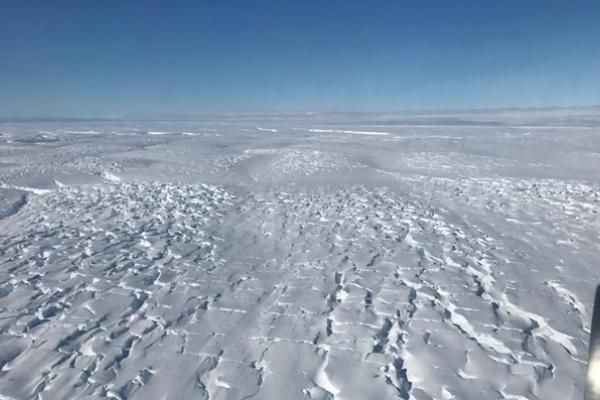The Role of the European Space Agency's CryoSat in Decoding Thwaites Glacier's Retreat

The European Space Agency's (ESA's) CryoSat mission has provided invaluable insights on the retreat of the Thwaites Glacier ice shelf in West Antarctica, as detailed in the study "Basal channels, ice thinning and grounding zone retreat at Thwaites Glacier, West Antarctica," published in the EGUspheres [preprint] scientific repository.
The study focuses on the ice shelf's basal channels—pathways through which meltwater flows—that play a significant role in the retreating grounding line where the ice meets the ocean bed.
The study's lead author is Byrd Center Alum Allison Chartrand, a postdoctoral research associate at the University of Maryland Earth System Science Interdisciplinary Center (ESSIC) and NASA Goddard Space Flight Center. Her co-authors are ENGIE-Axium Professor, Distinguished University Scholar at the School of Earth Sciences, and Director of the Byrd Center Ian Howat and Ian R. Joughin and Benjamin E. Smith, both from the Applied Physics Laboratory at the University of Washington.
This research leverages high-resolution data from CryoSat's SAR Interferometric Radar Altimeter (SIRAL) alongside high spatial resolution (10 meters) digital surface models from the Reference Elevation Model of Antarctica (REMA) to increase accuracy, allowing the mapping and monitoring of basal channels and ice shelf changes from 2010 to 2022.
CryoSat's unique orbit and advanced radar capabilities allow it to measure the Thwaites Glacier and ice shelf with unprecedented precision, crucial for assessing the glacier's structural integrity and ice dynamics.
The comprehensive use of CryoSat and REMA data not only enhances the accuracy of digital elevation models but also enables the scientific community to measure precise changes at very small scales, which is crucial for predicting and mitigating the effects of climate change.
To learn more, visit the European Space Agency and read about the study.
